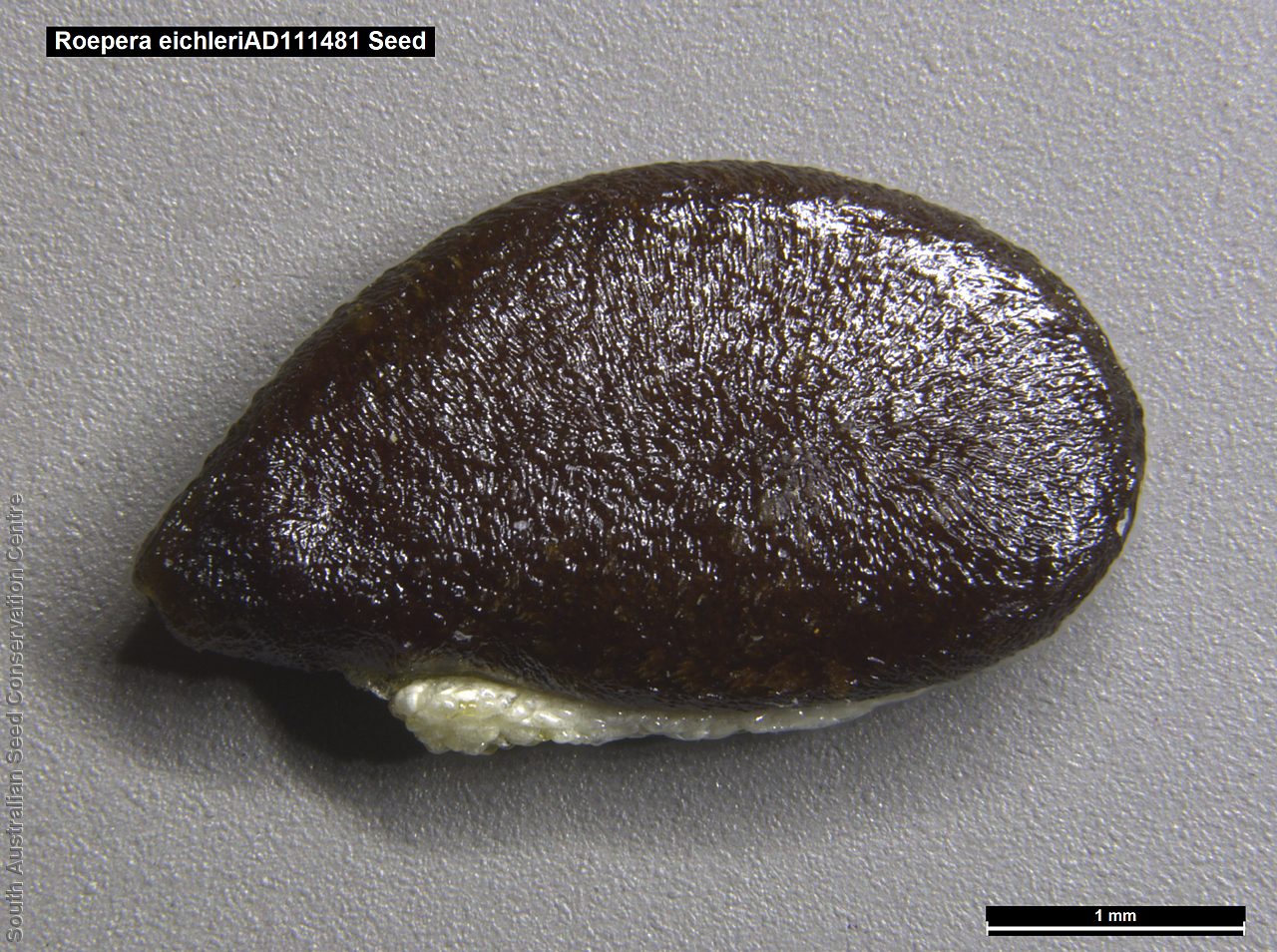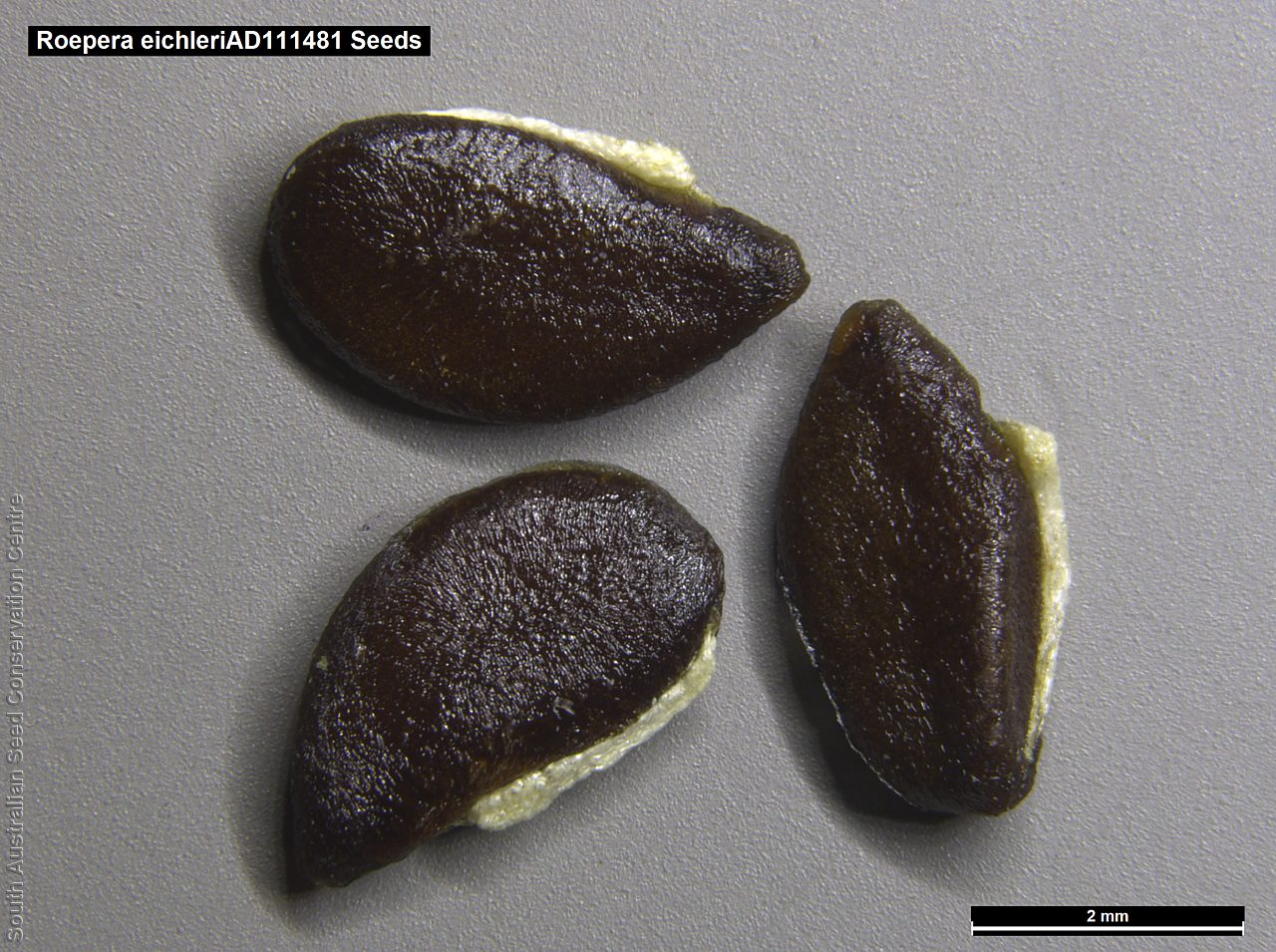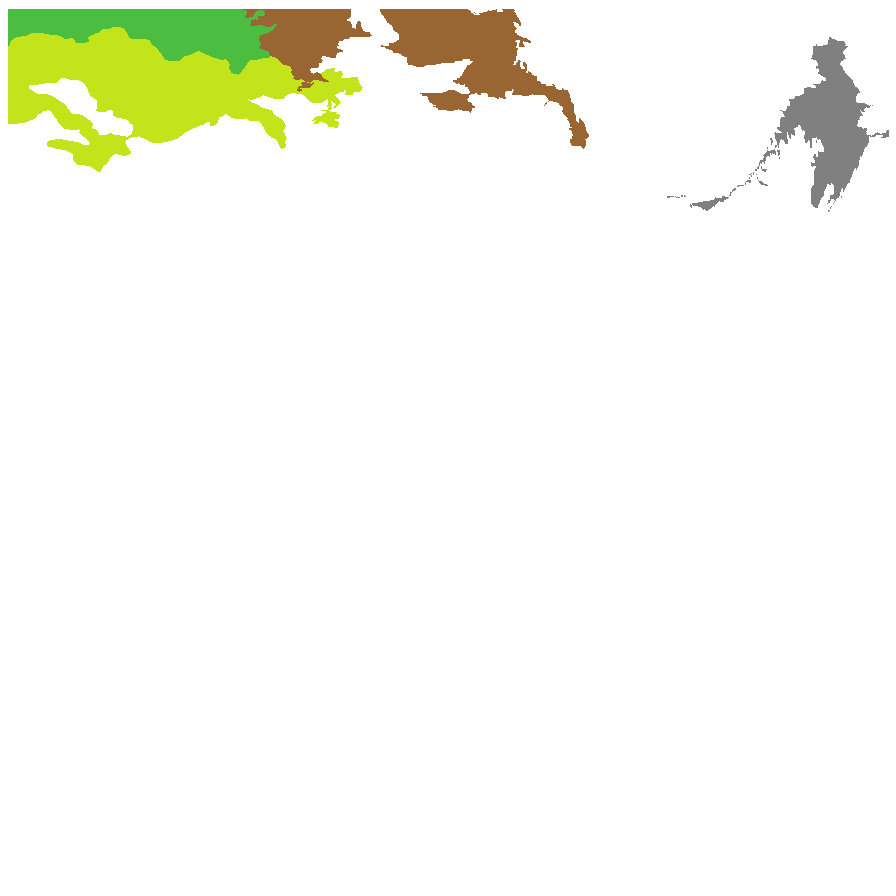



Botanical art
Prior names
Zygophyllum eichleri
Zygophyllum iodocarpum
Etymology
Roepera (formally Zygophyllum which is from the Greek 'zygon' meaning pair and 'phyllon' meaning leaf; referring to the pair of leaflets making up each leaf) is named after Johannes August Christian Roeper (1801 -1885), a German botanist and physician. Eichleri named after Hansjoerg Eichler (1916-1992), a German born botanist who took up the position of first Keeper of the State Herbarium of South Australia in 1955, and in 1973 was appointed as Curator of Herbarium Australiense, Australian Capital Territory, where he remained until his retirement in 1981.
Distribution and status
Found mainly in the north-western part of South Australia with scattered records in the north-eastern part, growing in rocky areas on red sand amongst scattered mulga, or in calcareous areas. Also found in Western Australia and the Northern Territory. Native. Uncommon in South Australia. Common in the other states.
Herbarium regions: North Western, Lake Eyre
NRM regions: Alinytjara Wilurara, South Australian Arid Lands
AVH map: SA distribution map (external link)
Plant description
Decumbent or prostrate, spreading annual herb to 20 cm high, glabrous. Leaves succulent, obovate, Y-shaped, to 15 mm long and 8.5 mm wide, continuous with stem and not articulated at base, rounded to obtuse at the apex. Inflorescence solitary at each node with yellow, aging white flowers. This species is related to Roepera tesquorum, R. iodocarpum and R rowelliae. It is distinguishable from R. tesquorum by the length of the pedicel in both flower and fruit, yellow flowers aging white rather than white flowers only and is distinguished from R. iodocarpum and R rowelliae by the single fruit at each node rather than paired. Flowering between June and September. Fruits are pale brown elliptical capsule to 8 mm long, with 5-angles and 5-cells, rounded at apex, with 1 seed per cell. Seeds are dark brown to black, ovoid to 4 mm long and 2 mm wide. Seed embryo type is spatulate fully developed.
Seed collection and propagation
Collect seeds between August and November. Collect semi-dried and dried capsules by running your hands through the stems of the plant. Mature fruits will come off easily and will have a hard and dark seed inside each segment. Place the capsules in a tray and leave to dry for 1 to 2 weeks, depending on how green the fruit is. Then rub the dried capsules to dislodge the seeds. Use a sieve to remove the unwanted material. Store the seeds with a desiccant such as dried silica beads or dry rice, in an air tight container in a cool and dry place. Seed viability is usually high.